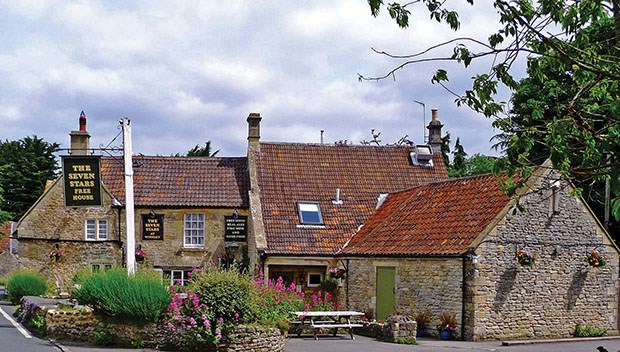Our Cotswold walking holiday begins in little known Monkton Combe, eight kilometres from Bath. Settled at the village inn, we examine prebooked custom itinerary, maps, trail-cards and even transportation vouchers, everything needed for our self-guided explorations. Shouldering daypacks filled with directions, hats, jackets, water, sunscreen and snacks, we take our first walk.
The village, we discover, dates to Saxon times. Lands granted to Bath Abbey provided monks a refuge in this verdant, steep-sided valley. Names like Monks Retreat and Monkswold are still etched on some stone houses.
Along a quiet lane, we pass the site of Fulling and Tucking Mills, closed since 1931. Our trail-cards
describe water driven stocks that degreased and, adding fuller's earth, felted cloth for dying.
Nearby stands the ivycovered home of William Smith, Father of Modern Geology and Bath's saviour. In 1810, the renowned geothermal spring mysteriously dried-up. Discovering it had diverted, Smith re-established its original channel. Sturdy boots and walking poles help us climb a nearvertical pathway to neighbouring Combe Down's community park, once a quarry supplying honeybrown limestone for building Bath and Buckingham Palace.
Before descending again, we gaze over our sleepy village below, population 356. Roast lamb and Yorkshire pudding back in the friendly pub rewards our successful reconnoiter.
A comfortable rhythm overtakes our next six days. Hearty English breakfasts
with French press coffees kick off excursions averaging five hours daily, over hill and dale. Pub lunches re-charge us for return loops through the pastoral countryside to our lodgings. And relaxing over dinner, we trade stories with fellow walkers and the regulars.
Meandering from Monkton Combe to Dundas Wharf, we sight triplearched Dundas Aqueduct built in 1798, the earlier of two spanning the Avon
valley. These engineering marvels kept the Avon canal level without using locks, which enabled barging 100,000 tons of coal to London annually, until 1898. Sleek canal boats now ply this waterway for pleasure.
Some footpaths prove easy; others test our stamina. Crossing farmlands today requires scrambling over stiles or through selfclosing kissing gates, permitting our access without
letting livestock out.
Along a picturesque lane, dog walkers explain prominent Save our Packhorse posters: "Sadly, new owners closed our beloved
17th century pub." Brightening, they grin, "But our parish church is worth a stop."
For another three days, we explore the Churn valley. From one farmland ridge, blue-sky scenery leaves us awestruck. Hedgerows border rippling blue-green wheat and pale-green bearded barley; scarlet poppies splash distant fields of bright-yellow canola.
We visit stone villages located along old Roman roads and trudge a demanding forested ridge. We join the Cotswold Way, an extensive National Trail popular with hardy hikers, including early monks on pilgrimage to Bath Abbey.
We enjoy tranquil National Nature Preserve parklands, ramble in beech woodlands where Henry VIII and Ann Boleyn hunted, pop into atmospheric churches and discover where Lord Mayor of London Dick Whittington likely spent his wretched boyhood on one of several estates owned by influential 13th century land barons.
Walking the Cotswold's less traveled pathways shows us rural England's beauty and charm.
Travel Writers' Tales is an independent newspaper syndicate that offers professionally written travel articles to newspaper editors and publishers.



